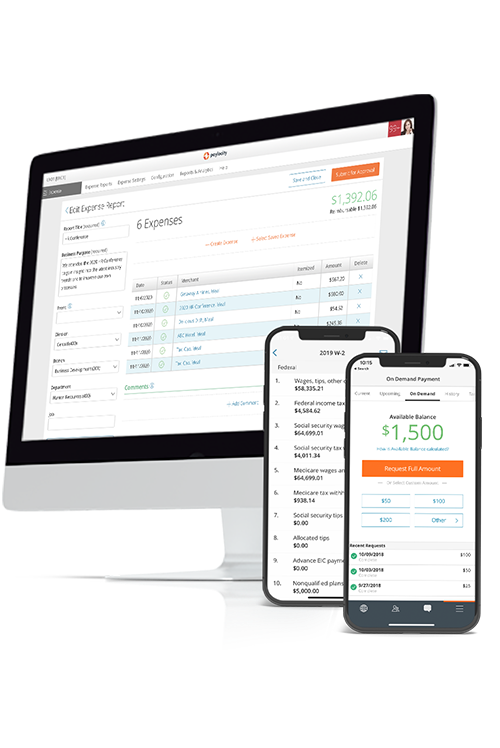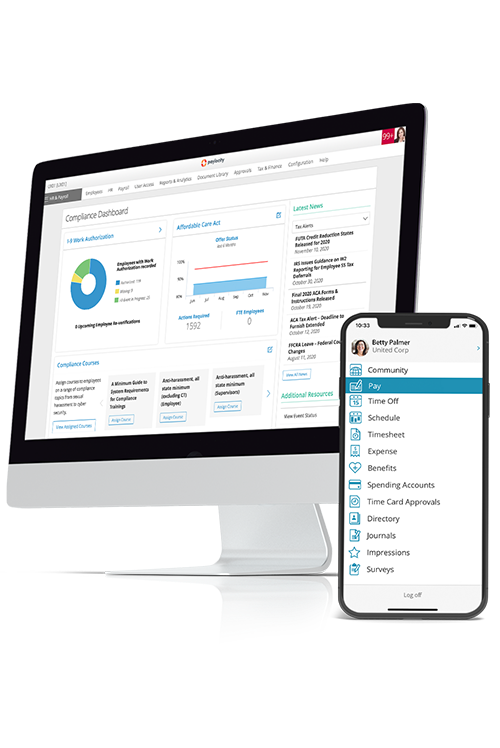Related Learning

Guide to Employee Classifications for Employers
Full-time, part-time, exempt, temporary… Employee classification can be confusing, but it’s a crucial aspect of human resources that impacts a company's compliance, liability, and finances.
Classifying employees correctly as exempt or non-exempt under the Fair Labor Standards Act (FLSA) determines their eligibility for overtime pay, meal and rest breaks, and other employment benefits. But there’s much more to the employee classification story, with additional categories that affect compensation, benefits, and work hours.
In this guide, we’ll provide an overview of employee classifications and break down some common employee types to see what makes them unique.
Note: The below information was last updated December 30, 2024. It is not intended as legal or tax advice.
Key Takeaways
- Employee classifications are categorizations based on an employee's role, responsibilities, and compensation. These classifications are needed to stay compliant with labor laws.
- The most common classification system is exempt and non-exempt, which impact the protections and benefits workers receive under the Fair Labor Standards Act (FLSA).
- Other classifications include: full-time, part-time, contractor, independent contractor, temporary, on-call, and volunteer.
What Are Employee Classifications?
Employee classifications are categorizations of employees based on their job duties, responsibilities, and compensation, and they are used by employers to maintain compliance with labor laws.
The most common classification system used in the United States is exempt and non-exempt, which falls under the FLSA. Exempt employees are typically salaried, professional workers who are exempt from overtime pay and other labor laws, while non-exempt employees are usually hourly workers who are entitled to overtime pay and other legal protections. Other classifications include part-time, full-time, temporary, seasonal, and independent contractors.
FLSA is the labor law to which most employers adhere, but there are some exceptions.
Exclusions from FLSA Coverage
Although most jobs are governed by the FLSA, there are two major exclusions: jobs specifically excluded in the statute itself, and jobs governed by a different federal labor law.
Some of the exemptions listed in the FLSA are:
- Employees of amusement parks or recreational establishments that operate for less than seven months per calendar year
- Fishermen, or any employees involved with catching or farming fish or other specified forms of sea life
- Employees of newspapers with fewer than 4,000 subscribers
- Most agricultural workers
There are also unique labor laws to consider. Railway workers, for example, are protected by the Railway Labor Act. Similarly, truck drivers are covered by the Motor Carriers Act. The U.S. Department of Labor lists several other major labor laws that address workplace activities and protect more than 150 million employees and 10 million employers.
Adhering to the appropriate labor law(s) is critical. Incorrect classification can lead to legal disputes and financial penalties, as well as damage to a company's reputation. Additionally, employee classifications impact the company's budget, workforce planning, recruitment, and retention strategies.
Exempt vs. Non-Exempt
Probably the most important employee distinction is between exempts vs. non-exempts due to the related labor laws and compliance implications. Employers can have a mix of exempt and non-exempt employees depending on business needs.
Exempt Employees
Exempt employees are exempt from overtime pay, and typically hold administrative, professional, or executive positions. They earn a salary instead of an hourly wage and are often compensated accordingly for the higher-level job duties they’re expected to perform.
Non-Exempt Employees
Meanwhile, non-exempt employees are entitled to overtime pay for any hours worked beyond 40 in a workweek (seven consecutive 24-hour periods). They are usually paid hourly and perform more manual or technical duties.
As a general rule, employees must meet certain tests regarding their job duties and compensation to qualify for exemption.
- Salary basis test: Verifies an employee is being paid a fixed amount each week regardless of number of hours worked.
- Salary level test: Checks to make sure an employee is being paid at least $684 per week.
- Job duties test: Ensures an employee’s job duties are consistent with exemption status, such as administrative, professional, and executive jobs.
Different Employment Types
In addition to the broad exempt vs non-exempt distinction, there many other employment types that come with their own set up laws and considerations. Some of the most common types are:
- Full-time employees work a specified number of hours per week, are paid a salary, and get access to company benefits. The terms are all set by the employer and may be subject to state-specific labor laws.
- Part-time employees work less than 40 hours per week, are paid hourly, and are eligible for FLSA benefits.
- Contract employees are hired by your organization for a defined period of time, work varying hours according to the contract, and are eligible for FLSA benefits.
- Independent contractors are like contract employees but are not on the company’s payroll; subsequently, work hours and exemptions are determined by the contracted organization.
- Temporary employees are hired on a short-term basis and are eligible for FLSA benefits.
- On-call employees are expected to be able to work during specific hours, are paid hourly, and are eligible for FLSA benefits.
- Volunteers work flexible schedules and are not offered compensation, so they are neither exempt nor non-exempt.
These types don’t have strict definitions in federal or state laws, meaning employers have some freedom when developing an employee classification policy. However, when established, the classifications should be applied consistently across the organization.
When creating an employee classification policy, there are some key distinctions to make to avoid costly fines and other penalties.
Full-Time vs. Part-Time Employment
Although there is no set law for the number of hours required to be a full-time employee, the IRS sets guidelines for employers. There are also important distinctions between full-time and part-time.
Full-Time Employees
Full-time employees work a set number of hours per week, often 40, and are paid on a salary basis rather than hourly. This means their pay doesn't change based on the number of hours they work. As part of their compensation, full-timers also often have access to company-provided benefits like health insurance and paid time off.
Part-Time Employees
Conversely, part-time employees generally work fewer hours per week and are paid hourly. This gives them more flexibility and allows them to potentially hold multiple part-time jobs simultaneously.
Part-time employees are also usually classified as "non-exempt," which means they're eligible for overtime pay and certain other benefits (such as minimum wage and youth employment standards) under the FLSA.
Seasonal vs. Temporary
As your workforce needs fluctuate, you may find you also need to hire intermittent help — that is, employees who are not on your payroll year-round.
Seasonal employees are hired to work during a specific time of the year when a company has an increased workload, such as a holiday season or peak tourist season. They are usually brought on for a set period of time, and their employment ends when the busy season is over.
On the other hand, temporary employees are hired for a shorter term to fill in for a brief absence, such as an employee going on leave, or for a special project with a defined end date. Temporary employees are often brought on through a staffing agency with an option to become a permanent employee if both the employee and the company are happy with the arrangement.
In general, seasonal and temporary workers provide employers flexibility to meet changing demands without the commitment of a full-time hire. And for employees, the option to take on more work as needed can help supplement income and build new skills.
How long can you keep seasonal/temporary employees?
There is no set time limit for keeping seasonal or temporary employees, but their length of employment is typically determined by the organization’s needs and the duration of the project or busy season for which they were hired.
Seasonal or temporary employees are hired for a specific period, which can range from a few days to several months. Some employers may choose to hire seasonal or temporary employees for permanent positions if there’s a need to extend their services. However, there are no legal requirements dictating how long a company must retain a seasonal or temporary worker.
Contract Employees
Contract employees are workers who are hired by a company to perform a specific task or project. They are not considered permanent employees and do not receive the same benefits and job security as permanent employees.
Companies often use contract employees to bring in specialized skills for a project. Contract employees are paid an agreed-upon rate for their work via Form 1099, which is detailed in their employment contract, and they are considered non-exempt if they are on the company’s payroll. Independent contractors, however, may be exempt if their primary employer (an agency or similar) has classified them as such.
Contract employment can be a flexible and cost-effective solution for companies, but it also means that the employees have limited job security and may not receive the same benefits as permanent employees.
What is the difference between temporary and contract employees?
Seasonal and temporary employees are typically hired for a specific, limited time period, such as the holiday season or a temporary increase in workload. They typically have a set end date to their employment and are not expected to continue working with the company after that.
Contract employees, on the other hand, are hired for a specific project or task, and their employment is tied to the completion of that project or task. They may be independent contractors or part of a contract firm, and they usually have more control over their work schedule and tasks than seasonal or temporary employees.
The length of a contractor's work can range from a few days to several months or even years, depending on the scope of the project.
Managing a Complex Modern Workforce
Regardless of which types of workers your organization may employ, having a mix of them can further complicate routine HR and payroll tasks. Organizations of all sizes and with all types of employees leverage payroll software to keep employee data organized and ensure everyone receives the correct pay at the correct time.
Payroll software also helps ensure compliance with tax and labor laws, minimizes the risk of financial penalties, and improves employee satisfaction (by providing those accurate and timely paychecks). Additionally, it provides valuable insights and analytics that can inform decisions and help drive business growth.
Working with Paylocity as your payroll provider means getting all the above benefits and more. To explore Paylocity as a potential payroll service for your organization, request a payroll demo today.



